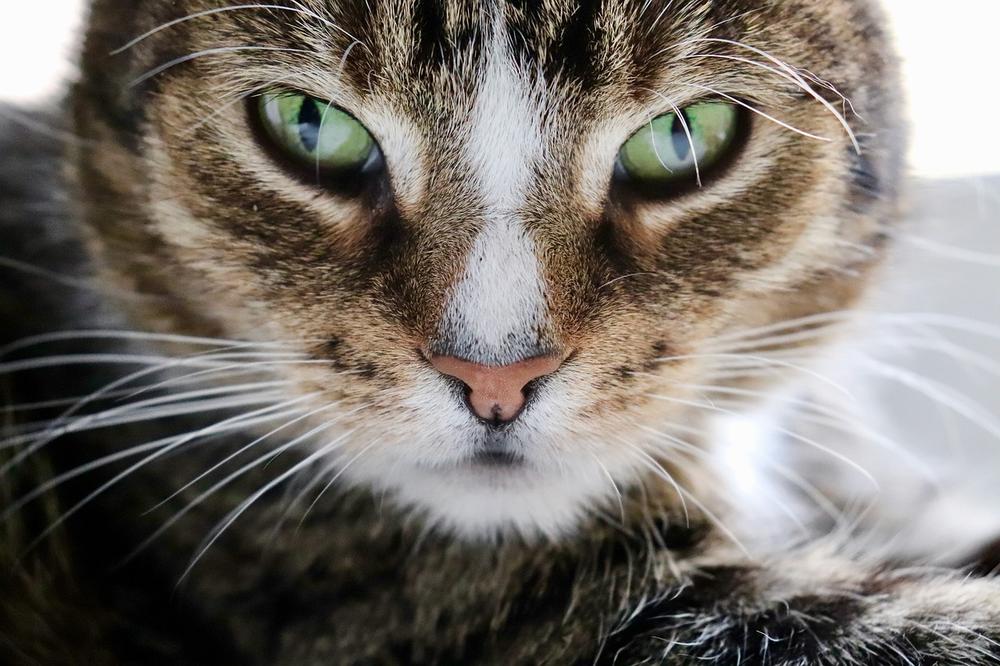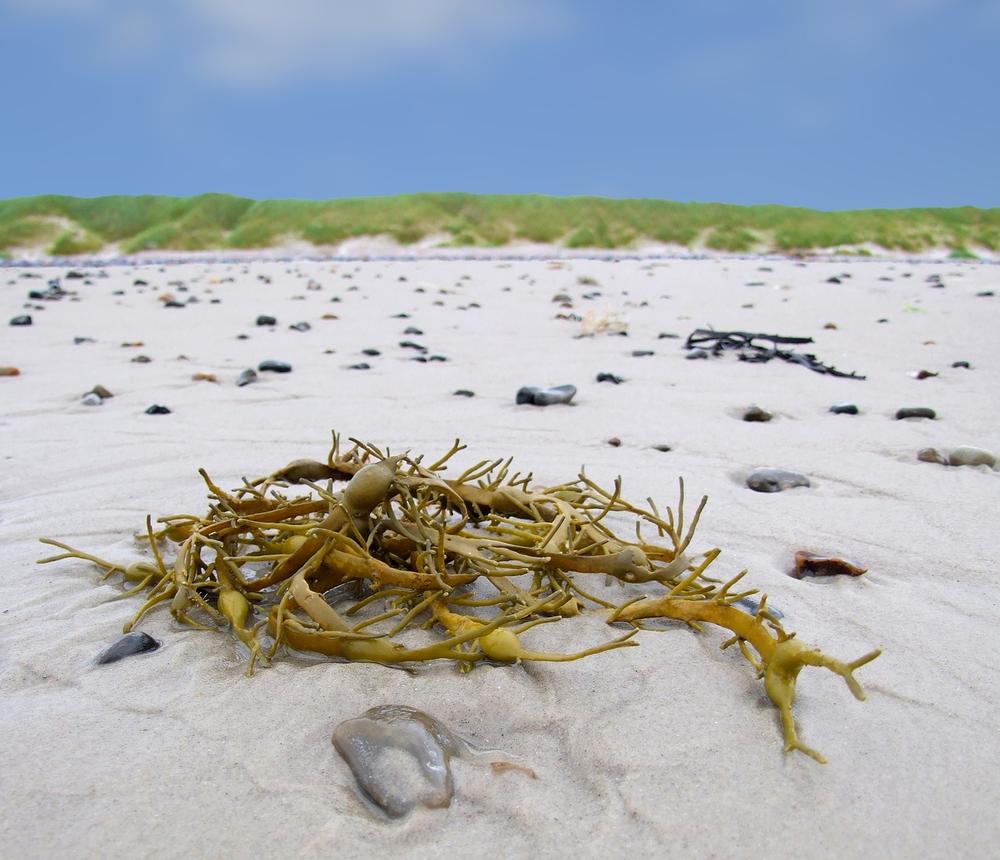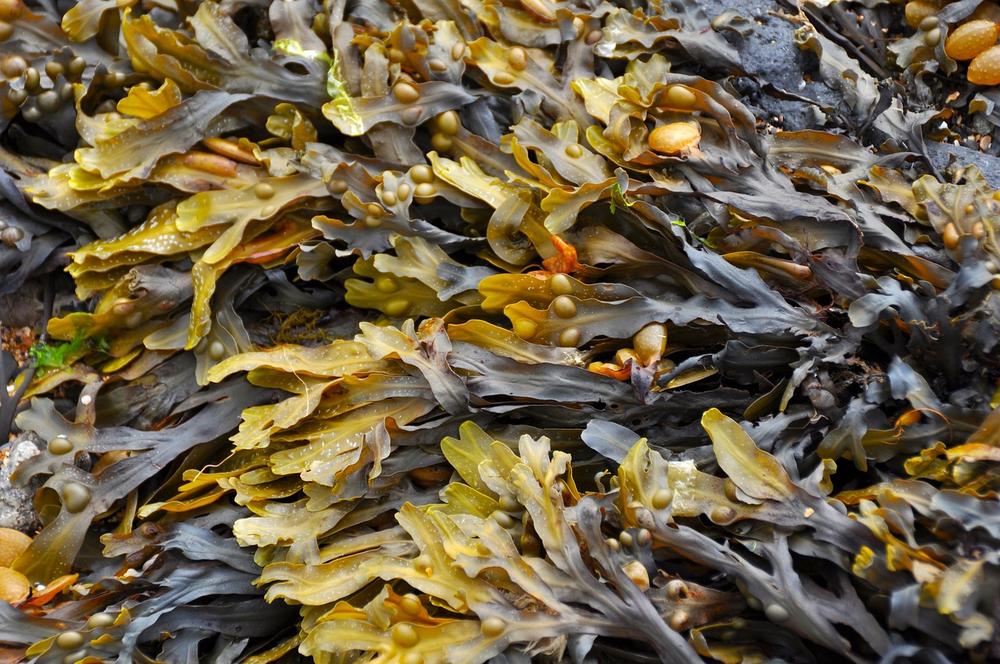Can CATS Eat SEAWEED? Is It Good or Toxic to Cats?

Did you know that cats have a taste for the sea?
But wait, before you start envisioning your feline friend donning a snorkel and diving in, let's explore the question on every concerned cat parent's mind:
Can cats safely eat seaweed?🐱
Let's dive in and find out together.
The Nutritional Value and Health Benefits of Seaweed for Cats
Seaweed gives your cats the nutrients they need
Did you know that seaweed is a natural source of essential vitamins and minerals for your furry friends?
It's like a special gift from Mother Nature just for them.
Vitamins A, C, E, and K are all found in seaweed, and these are crucial for boosting your cat's immune system and in essence well-being.
So many health benefits from seaweed for cats.
When it comes to the benefits of seaweed, the list goes on and on. This superfood is not only safe but also highly beneficial for your precious kitties. If your little buddy has a sensitive tummy, adding seaweed to their diet can help ease any issues they might have.
Not only that, but seaweed can also work wonders for their skin conditions. Want to keep infections at bay and ensure a healthy heart for your feline companion?
Well, guess what?
Seaweed can be the answer you're looking for.

Its powerful antioxidants are great for their heart health and will strengthen their immune system.
Different types of seaweed offer unique advantages
Sea kelp, wakame, and Irish moss – each variety of seaweed provides specific health perks for your beloved pet.
By introducing seaweed into your kitty's diet, whether through specialized cat food or as a supplement, you'll notice incredible improvements in their skin and coat health.
Forget about dryness, redness, irritation, and itching – those will all become things of the past!
Moreover, seaweed can do wonders for their digestion.
It helps maintain a healthy balance of gut bacteria, promotes intestinal well-being, and even aids in removing plaque and tartar buildup for a happier, healthier tummy.
Just make sure that you be cautious because seaweed contains high levels of iodine.
Feeding too much seaweed to your fur baby can lead to hyperthyroidism, so ensure to moderate their intake.
Main points I'll expand upon further down this article:
- Feeding seaweed to cats can be a healthy treat if done in moderation.
- Choose human-grade, sun-dried, and organic seaweed for your cat.
- Avoid fried, seasoned, or preserved seaweed varieties.
- Use seaweed as a supplement or treat, not as a primary food source.
- Adhere to cat feeding guidelines and offer only a small amount of seaweed.
- Chop seaweed into tiny pieces and sprinkle sparingly on top of your cat's food.
- Join Facebook groups for cat lovers to gather more information.
- Beware of potential health risks associated with feeding seaweed to cats.
- Avoid seaweed with salt and monitor for symptoms of vomiting, lethargy, and diarrhea.
- Opt for organic or low-heavy metal content seaweed and consider alternative snacks.
And now let's explore the specific types of seaweed that can provide optimal benefits for your cat's health!
Types of Seaweed That Are Safe for Cats to Consume
If you're thinking about giving your cat seaweed, here are some safe options for you:
- You can try wakame, a brown seaweed that has lots of good stuff like minerals and vitamins that can help your kitty's health.
- Another option is Irish moss, a red seaweed that's high in essential nutrients and antioxidants.
- Sea kelp is a type of brown seaweed that has iodine, which is important for cats to have a healthy thyroid function.
- When picking seaweed for your cat, make sure it's human-grade and organic.
- It's best to go for sun-dried seaweed since this way it keeps more of its nutritional value compared to other drying methods.
- To ensure the seaweed is clean from harmful stuff, choose types that have been tested for heavy metals and contaminants.
- Steer clear of fried, seasoned, or preserved seaweed since these could have ingredients that aren't good for cats.
- Remember to introduce seaweed gradually and follow proper cat nutrition guidelines.
With these tips, you can safely give your cat seaweed as a nutritious treat without worries. 😺

But what about spinach? As a cat owner, I understand your curiosity.
If you're wondering if cats can eat spinach and the risks and benefits associated with it, look no further than my helpful blog post: Can Cats Eat Spinach.
It's the perfect guide to help you make an informed decision for your furry friend.
How to Introduce Seaweed into Your Cat's Diet
Here's how:
- Start with just a little pinch of finely chopped seaweed mixed in with your cat's regular food.
- Slowly increase the amount over time, giving them a chance to get used to the taste and texture.
- Make sure you're using high-quality seaweed that's meant for humans – no weird additives or fancy spices.
- Remember, seaweed is a treat for your cat, not their main course.
- Stick to the recommended portion sizes for cats and don't go overboard with the seaweed.
- Chop it up into tiny bits and sprinkle just a small amount (about 1/8 to 1/4 teaspoon) on top of their usual food.
- Think of seaweed as a special treat every now and then, rather than an everyday thing.
- By following these steps, you can make sure your furry friend gets all the good stuff seaweed has to offer without upsetting their tummy.
Got it?
Great!
Time to get your cat seaweed-savvy.

Attention: If you're curious about whether your cat can safely consume basil and want to learn more about the potential risks and benefits, you can check out Can Cats Eat Basil.
And now, here's the deal...
While seaweed can offer some benefits to your cat, you must ensure its compatibility with their dietary needs and health conditions.
So, how do you know if seaweed is right for your feline companion?
Let's dive deeper into this topic and explore the important considerations before incorporating seaweed into your cat's diet:
Consulting with a Veterinarian about Feeding Seaweed to Cats
Consult your vet before adding seaweed to your cat's diet.
Make sure it fits their dietary needs and health conditions.
When feeding seaweed to your cat, be frugal with the amount you use in their meals.
Research all-natural seaweed as a feline supplement beforehand for added benefits.
Looking for additional information or sharing experiences with fellow cat lovers?
Join Facebook groups dedicated to cats for valuable insights and support.
Risks and Dangers of Feeding Seaweed to Cats
Giving cats seaweed can be dangerous, so here are 10 things you need to keep in mind:
- Stay away from seaweed with added flavors or seasonings.
- These additives can lead to sodium poisoning.
- Watch out for symptoms like vomiting, tiredness, and diarrhea.
- Since cats are built for meat-based proteins, it's important to moderate their intake.
- If your cat shows any signs of illness after eating seaweed, call the vet right away.
- Keep a close eye on your cat's overall health and energy levels.
- To avoid deposits of mercury and lead, go for organic or low-heavy metal seaweed.
- Instead of giving them chips or high-sodium snacks, try seaweed-infused options or dental powders.
- Cooked chicken, tuna, or salmon make better snack choices.
- Too much iodine in seaweed can cause hypersensitivity and even hyperthyroidism.
Excess iodine can be fatal and result in vomiting, diarrhea, and excessive drooling.

To prevent sodium poisoning, check expiration dates and avoid flavored or seasoned seaweed sheets.
And that wraps up today's article.
If you wish to read more of my useful articles, I recommend you check out some of these: Can Cats Eat Chia Seeds, Can Cats Eat Sunflower Seeds, Can Cats Eat Rosemary, Can Cats Eat Sesame Seeds, and Can Cats Eat Arugula
Talk soon,
-Sarah Davis